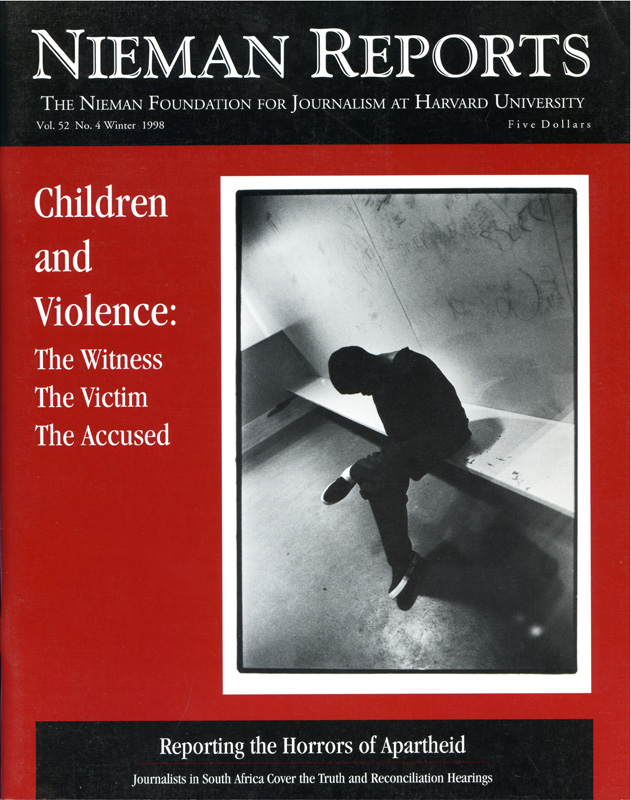In the end, the Nieman year is always about people.
The people who share that magical title of “fellow,” and those whom we meet along the route of our nine-month carriage ride through Harvard. It is about connections and conversations and being given the luxury of time to indulge in them.
By the end of 1996, five months after I returned from Cambridge to my job at The Albuquerque Tribune in New Mexico, I had given up trying to describe the classes, seminars, lectures and extracurricular activities of my fellowship and fellow fellows. Instead, I explained the influences of three people who framed my Harvard year:
- Prof. Robert Coles.
- The Rev. Peter Gomes.
- And Dr. Jonathan Mann.
Dr. Mann was one of 229 people killed aboard Swissair Flight 111 that plunged into the Atlantic Ocean September 2 on a flight from New York to Geneva. Mann died alongside his wife of two years, Dr. Mary Lou Clements-Mann, a vaccine expert and director of immunization research at Johns Hopkins University School of Hygiene and Public Health. She was working on an AIDS vaccine. Both were 51 years old.
I audited Mann’s General Education class, “AIDS, Health and Human Rights,” and we became friends. We had New Mexico in common and the dual sense of awe and injustice it inspires. It was the poverty, ruralness and other challenges of that state that sparked his interest in contributing to developing nations.
In 1984, he left his post as state epidemiologist and Chief Medical Officer at New Mexico’s Department of Public Health and worked in Zaire on a fairly new disease called AIDS for the U.S. Centers for Disease Control and Prevention. Within two years, Mann was named to head the World Health Organization’s first Global Program on AIDS, a position he resigned in 1990 over a philosophical clash with WHO’s new top executive.
Mann then returned to Boston, his hometown, and Harvard University. Always looking for his next challenge, Mann merged his two passions—public health and human rights—into a foundation and new center within Harvard’s School of Public Health.
CORRECTION:
An earlier version of this article incorrectly listed the year of the conference on health and human rights. It was held in 1994.Mann used this new stage to recharge the global fight against AIDS, a battle he viewed as backsliding into the usual fragmented mess of feuding bureaucrats and territorial organizations after an unprecedented decade of solidarity. He organized the first international conference on health and human rights, held at Harvard in the fall of 1994. And it was Jonathan Mann who foresaw the need to protect people with AIDS and HIV against employer, insurance and other discrimination.
But in my world in that brief moment of time, he was one of the most unassuming, down-to-earth professors I encountered. From the very first time I walked into his 16-week class, Mann exuded enthusiasm. “Consider human rights violators as pathogens in the world,” he told the class of 300. “Dignity impacts on health. When indignities happen, the emotional scars are deep and long lasting.”
In the final section of the semester, he explained the response to AIDS (or lack thereof) and the need to learn from the mistakes for the next pandemic. “AIDS is not just a disease but it involves a host of social issues,” he reminded us again and again. “Why spend so much time and effort trying to get a young black man in the city to use condoms if we don’t also work at assuring him he has a future?”
I don’t know when I actually last spoke to Mann. I had spoken to him a few times after he became Dean of Allegheny University’s new public health school in Philadelphia, a job he took in part to be closer to his wife. (This was the second marriage for both.) His last E-mail to me joked about the frustration of wanting to connect to say “hello” either in person or on the phone. We never did.
As I read through the pile of tributes read at worldwide memorial services, it was this comment from Swiss President Flavio Cotti that tapped my heart. “The tragedy reminds us painfully how fragile our lives are, how absurd our daily running around often seems.”
The husband and wife team were on their way to the WHO Geneva headquarters for a series of global strategy sessions on AIDS when the jet crashed. Since departing on bitter terms, this was Jonathan Mann’s first step back into the fold of WHO where he hoped his message would be better received.
Obstinate, tenacious, passionate, a pioneer, slayer of the status quo and a crusader against public enemy number one: complacency. So very few people leave such an imprint on the world, a classroom, a casual acquaintance. A projected image of the earth taken from the heavens dominated Mann’s last class in May 1996. He ended the semester with this challenge: “Learn to see the world in need of change. Hear the silence. Have the courage to speak truth to power. We are all travelers on this planet. We must learn how to be human together on earth. With whom you make a stand and when you stand will be decided with your mind linked to your heart.”
Patricia Guthrie is a health reporter for The Atlanta Journal-Constitution and a 1996 Nieman Fellow.


